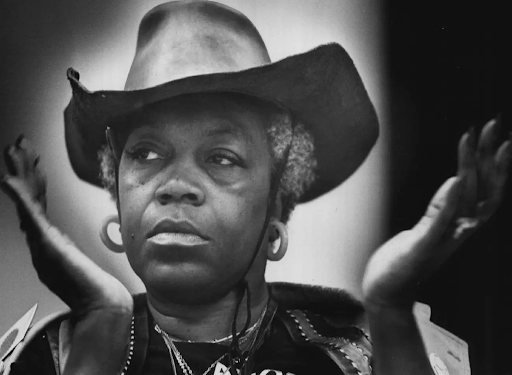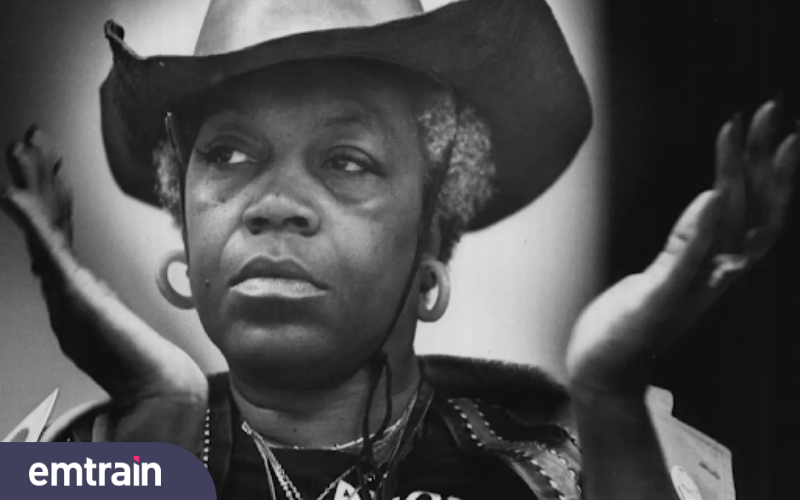“My persuasion
Can build a nation
Endless power
With our love we can devour”
Women have always been these 3 things:
- Smart enough to make millions
- Strong enough to bare children
- Then, get back to business
That is at least, according to Beyonce. Though a credentialed researcher of these matters she is not, what Beyonce says in her anthemic song “Run The World” highlights an unassailable truth: The world is better because of women. When viewed in a historical context, the work that women do has laid the foundation for us all to enjoy safer, more equitable workplace experiences.
Still, many of the early pioneers’ stories in the fight for labor rights and protections are heroes, yet unsung. As we celebrate Women’s History Month, let us acknowledge some of the women whose names may not be known in every household, but whose strength and fierce determination made the world a better place to work.
Progress From Peril – Pauline Newman
 Devastated by the Triangle Shirtwaist Fire tragedy where she had worked, Pauline Newman understood the urgency and the imperative to address what she saw as two major causes of the event that claimed the lives of 146 predominantly Jewish and Italian immigrant women:
Devastated by the Triangle Shirtwaist Fire tragedy where she had worked, Pauline Newman understood the urgency and the imperative to address what she saw as two major causes of the event that claimed the lives of 146 predominantly Jewish and Italian immigrant women:
-
-
- A lack of organization and advocacy around how the workforce treated women
-
- The outright untenable and dangerous working environments to which women were subject.
This drove her work, as she traveled the country unionizing the female workforce and organizing labor strikes, most notably, “Uprising of the 20,000” strike in 1909. For her tireless work organizing and sustaining the strikes, Newman was appointed the first woman general organizer for the International Ladies Garment Workers Union. Over her seventy-plus years with the union, she fought to convince male leaders to acknowledge the needs and talents of women workers. As one of the few working-class women of her generation who chronicled the struggles of immigrant working women, Newman also left an important legacy through her writings for newspapers and labor publications.
 From Jazz to Justice – Florynce “Flo” Kennedy
From Jazz to Justice – Florynce “Flo” Kennedy
In the grand tradition of Jennifer Hudson and Michael Jordan, Florynce “Flo” Kenndy’s story began with rejection. But, like those talented titans, she was undeterred. After initially being denied admission to Columbia University because she was a woman, Kennedy used the law to advocate for herself , gain admission to the institution, and go on to become one of its first black female graduates in 1951.
But that was just the beginning. Kennedy went on to practice law and one of her first cases was on behalf of jazz legend Billie Holiday, who was seeking money her record company owed her. Soon, though, Flo Kennedy became disillusioned by the legal system saying ” It taught me more than I was really ready for about government and business delinquency and the hostility and helplessness of the courts.”
So, she set her sights on women in the workplace. Specifically, Florynce took on The New York Times which, in the late 1960s had job ads segregated by sex. This led Ms. Kennedy along with the New York chapter of NOW to alert the EEO Commission who sided with Flo and company, finding that the practice of separate want ads violated the Civil Rights Act’s Title VII, which prohibits discrimination on the basis of sex. This early victory proved critical in advancing feminist movements in the 60s and beyond.
The Real Norma Rae: Crystal Lee Sutton
 Forever etched into American film and pop culture history is the poignant climax of the film Norma Rae, where Sally Field’s Norma, small, fierce and female, stood on a table and held up a sign that featured just one1 word: Union.
Forever etched into American film and pop culture history is the poignant climax of the film Norma Rae, where Sally Field’s Norma, small, fierce and female, stood on a table and held up a sign that featured just one1 word: Union.
Sadly, that fictional, albeit wonderfully acted, portrayal is all many people know about the legacy of the film’s real life inspiration, Crystal Lee Sutton. In what is widely regarded as one of the nastiest climates in US labor history, J.P. Stevens & Company’s Roanoke Rapids mills, where Sutton worked, reached a level of infamy for repeated harassment and termination of union activists.
Crystal worked at the mill, as her family had done for 3 generations. She and her fellow workers faced what she identified as “paltry wages, the bone-tiring work and stingy benefits”. This ignited something in Sutton, setting her on a path, fighting to unionize J.P. Stevens workers. That fire in Crystal was undeniable, causing Eli Zivkovich of the Textile Workers Union of America to say of Sutton “in his 20 years as an organizer he had never known anyone who matched Sutton’s zeal.”
But more than zealous, Crystal was tough. Facing threats and alienation from many in the tiny town where she lived and worked, Crystal Lee Sutton did not relent. She lost perhaps more than we can ever know in this fight, but ultimately, she succeeded. On August 28, 1978, the 3,133 workers at the Roanoke Rapids plant voted to allow The Amalgamated Clothing and Textile Workers Union (ACTWU) to represent them by a slim 237 vote margin.
Promises To Keep, and Miles To Go
What drove these women was the promise of a brighter, more equitable future for those that would come after them. They sought not simply to advance the cause of equality for women, but to hold the nation to account for its promise of liberty and justice for all. Though so many powerful women today work to make that promise real, we have miles to go before we sleep. So, let us accept the torch, the rhythm, and the blues and all that comes with it, awake and with eyes wide open in our work as culture leaders to create a future of work that these women would be proud of.










